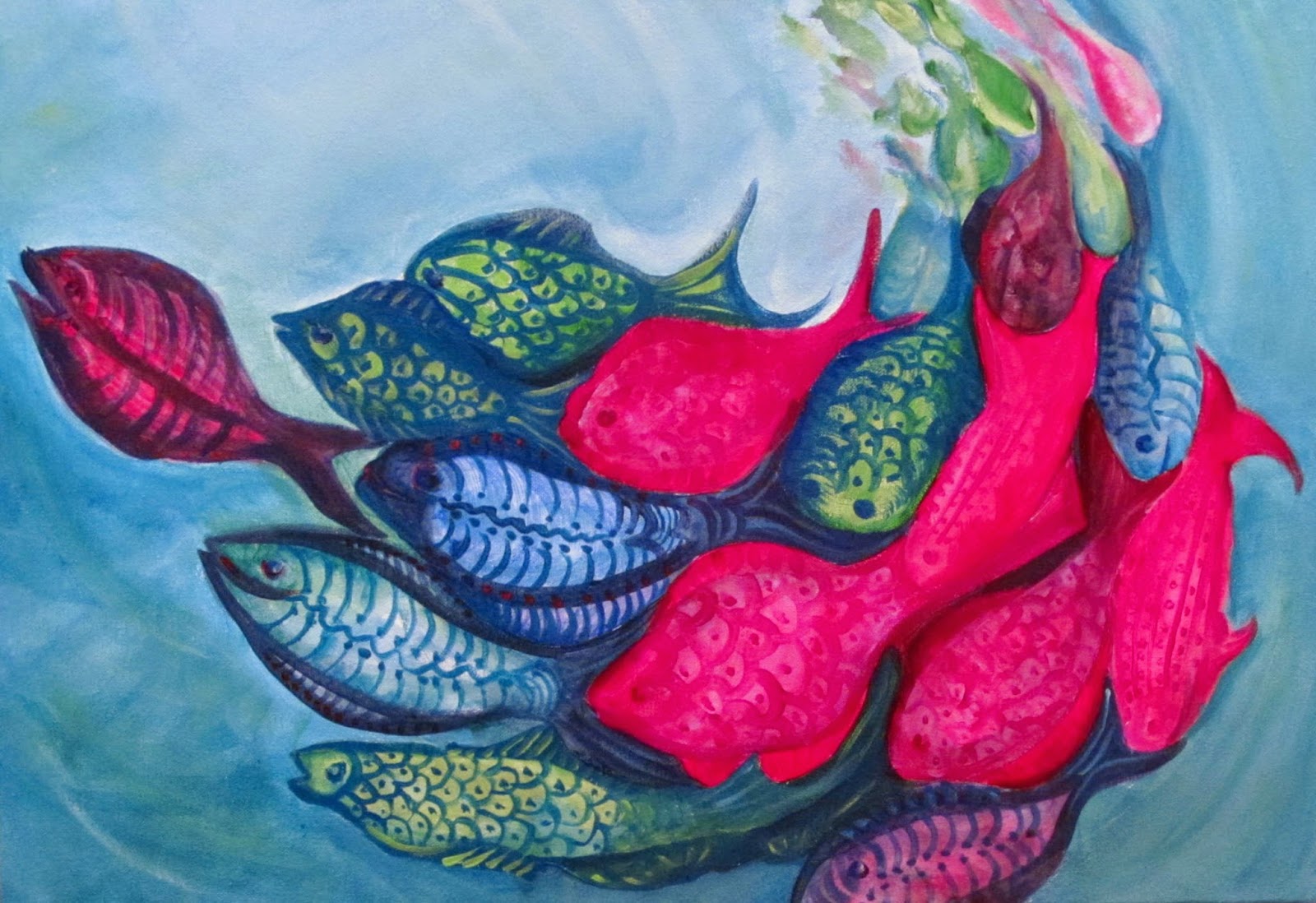 |
| "Victims of War" acrylic on canvas |
I know an art teacher who also owns an art store. One day he showed me his
paintings that were hung around the entire shop near the ceiling. He used these
in classes for examples and demonstration.
“My paintings
used to go so fast, I couldn’t keep any hanging,” he said. “Now I can’t sell
any of them.”
The paintings
were stunning landscapes of Florida scenes and of the Gulf; traditional
compositions that once “brought a hefty price,” he complained.
Today “wild
is in.” Even the works of amateurs are being bought up if they are unusual,
colorful, and a tad weird. Perhaps it’s a reflection of the times and our
confused and undisciplined society. Anything goes as long as it entertains and
dazzles the eye; fads that may in time become the new “norm.”
Finding the
right balance is a real dilemma every artist grapples with. Keeping one foot in
the real world and the other in the solid traditions of the past is a struggle.
When you allow yourself to push against the outer limits, or by way of contrast
show restraint, a judgment call must be made based on each artist’s level of experience
and training.
 |
| "Prayer Circles" mixed media on canvas |
I enjoy the
humor that many artists use to invite people into their perspective.
There are so many fearful and chaotic events happening at home and around the
globe to cause anxiety. Some “comic relief” is healthy and relieves stress.
Conversation pieces that cause laughter rather than thoughtful reflection may
be just what the doctor ordered.
Tactile
paintings: pop art, half art and half craft invite us to touch and examine.
Critics lament that this practice degrades and gives real works of art a tawdry
and cheap appeal. But they are selling none-the-less because they’re affordable
and fun.
Trends come
and go. What is in fashion today may be gone tomorrow. Artists must learn to
adapt to the changing scene and create a unique and appealing style that sets them
apart from the rest; keeping in mind that the classics, the centuries old tried
and true methods of the past have weathered the test of time and will endure.
 |
| "Moody Blues" mixed media on canvas |
Vibrant color
is a significant part of this new genre. From the book: “Color Design Workbook”
by Adams Morioka and Terey Stone, the authors’ state: “Color is a visual
language in and of itself; it can attract the eye and focus attention on the
intended message in the work. Color can be used to irritate or relax, encourage
participation or alienate.
Advertiser Josef Albers remarked that “Whether bright
or dull, singular or complex, physiological or psychological, theoretical or
experiential, the persuasive power of color attracts and motivates.”
Also from the
book: “As humans, we seek balance, especially in terms of color. For example,
when exposed to a particular hue, our brains seem to expect the complementary
color. If it is present, the combination looks vibrant. If it is absent, our
brains tend to produce it to form a balance.”
These very
reasons alone explain why one painting is chosen over another. Although people
see colors in different ways, they almost always choose that which is pleasing
to the senses. With knowledge and experimentation, you too can be a part of
those who sell on a regular basis.
 |
| "Cafe' Costa Rica" acrylic on canvas |



.jpg)



.jpg)
.jpg)
.jpg)
.jpg)
.jpg)
.jpg)
.jpg)
.jpg)




.jpg)
.jpg)






